 W
WJohn Atkins (1685–1757) was a British Royal naval surgeon and slaver.
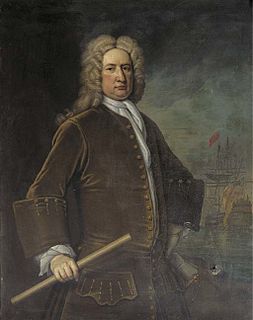 W
WJohn Baker was an officer of the Royal Navy and politician who sat in the House of Commons between 1713 and 1716. He rose to the rank of vice-admiral after service in the Nine Years' War and the War of the Spanish Succession.
 W
WBasil Beaumont, rear-admiral, was the fifth son, amongst the twenty-one children, of Sir Henry Beaumont, of Stoughton Grange and Cole Orton.
 W
WSir Samuel Bentham was a noted English mechanical engineer and naval architect credited with numerous innovations, particularly related to naval architecture, including weapons. He was the only surviving sibling of philosopher Jeremy Bentham, with whom he had a close bond.
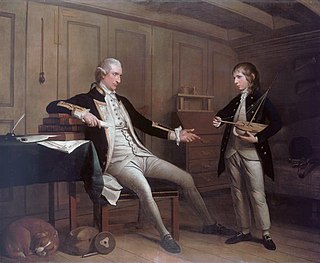 W
WJohn Albert Bentinck was an officer of the Royal Navy, an inventor and a Member of Parliament.
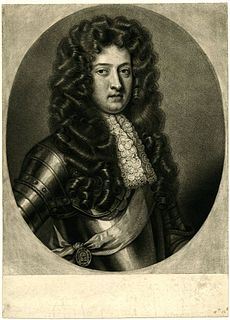 W
WJohn Egerton, 3rd Earl of Bridgewater KB PC was a British nobleman from the Egerton family.
 W
WRichard Brothers was an early believer and teacher of British Israelism, a theory concerning the Lost Ten Tribes of Israel.
 W
WWilliam Robert Broughton was a British naval officer in the late 18th century. As a lieutenant in the Royal Navy, he commanded HMS Chatham as part of the Vancouver Expedition, a voyage of exploration through the Pacific Ocean led by Captain George Vancouver in the early 1790s.
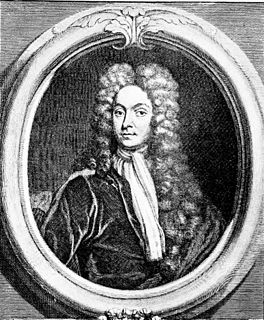 W
WJosiah Burchett, of Hampstead, Middlesex, was a British naval administrator and Whig politician, who sat in the English and British House of Commons between 1705 and 1741. He was Secretary of the Admiralty in England, a position he held for almost fifty years from 26 September 1694 to 14 October 1742. In addition to his administrative duties, he was the author of the first general history of the Royal Navy, published in 1720 and based on official Admiralty records.
 W
WPhilip Carteret, Seigneur of Trinity was a British naval officer and explorer who participated in two of the Royal Navy's circumnavigation expeditions in 1764–66 and 1766–69.
 W
WGeorge Clarke, of All Souls, Oxford, was an English architect, print collector and Tory politician who sat in the English and British House of Commons between 1702 and 1736.
 W
WLieutenant John Clarkson (1764–1828) was a Royal Navy officer and abolitionist, the younger brother of Thomas Clarkson, one of the central figures in the abolition of slavery in England and the British Empire at the close of the 18th century. As agent for the Sierra Leone Company, Lieutenant Clarkson was instrumental in the founding of Freetown, today Sierra Leone’s capital city, as a haven for chiefly formerly enslaved African-Americans first relocated to Nova Scotia by the British military authorities following the American Revolutionary War.
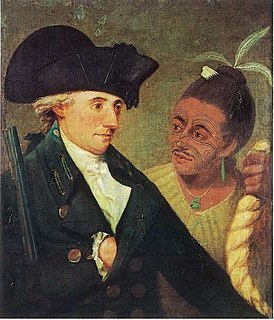 W
WCaptain Charles Clerke was an officer in the Royal Navy who sailed on four voyages of exploration, three with Captain James Cook. When Cook was killed during his 3rd expedition to the Pacific, Clerke took command but died later in the voyage from tuberculosis.
 W
WAdmiral Sir Isaac Coffin, 1st Baronet was an officer of the Royal Navy who served during the American War of Independence and the French Revolutionary and Napoleonic Wars.
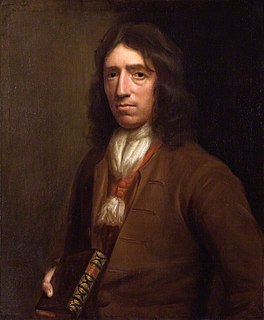 W
WWilliam Dampier was an English explorer, pirate, and navigator who became the first Englishman to explore parts of what is today Australia, and the first person to circumnavigate the world three times. He has also been described as Australia's first natural historian, as well as one of the most important British explorers of the period between Sir Walter Raleigh and James Cook.
 W
WCaptain John Deane was an English sailor with a long career in the Royal Navy and Russian Navy. He rose to the rank of captain in the Royal Navy, commanding in the Capture of Gibraltar. Deane later commanded a trading vessel, the Nottingham Galley, shipwrecked on Boon Island in 1710. Deane spent 1714–1721 in service with the Tsar Peter the Great commanding a Russian naval ship. He then worked in Flanders as British Consul to the Port of Ostend until 1740, when he retired to his native Wilford, Nottingham. He died in 1761 from injuries in a violent assault. His wife died on the next day.
 W
WAdmiral Robert Digby was a Royal Navy officer who also served briefly as a Member of Parliament (MP). He is the namesake of Digby, Nova Scotia.
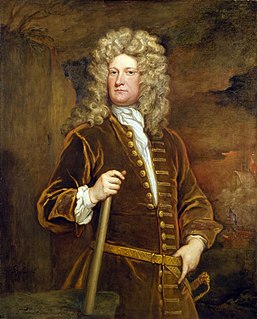 W
WRear Admiral Sir Thomas Dilkes was an officer in the Royal Navy.
 W
WHenry Duncan was an officer of the Royal Navy, who saw service in the American War of Independence. Duncan was born in Dundee, Scotland to Alexander Duncan, Town Clerk of Dundee, and Isobel Crawford.
 W
WWilliam Elliott, was a lieutenant in the Royal Navy and marine painter.
 W
WJohn Elphinstone, also known as John Elphinston, was a senior British naval officer who worked closely with the Russian Navy after 1770, with approval from the Admiralty, during the period of naval reform under Russian Empress Catherine II. Together with the Scottish-born Samuel Greig, or Samuil Karlovich Greig, as he was known in Russia, and Admiral Sir Charles Knowles, Elphinstone was a member of the naval staff, headed by Count Alexei Grigoryevich Orlov, which, though it lacked naval experience, was able to defeat the Turkish fleet at the Battle of Chesma Bay, near Chios Island, off the far western coast of Turkey.
 W
WAdmiral of the Fleet Sir Stafford Fairborne was a Royal Navy officer and Whig politician. As a captain he saw action in command of various ships at the Battle of Beachy Head, at the Battle of Barfleur and at the Battle of Lagos during the Nine Years' War.
 W
WRobert Fairfax was a rear admiral and politician.
 W
WJohn Borthwick Gilchrist was a Scottish surgeon, linguist, philologist and Indologist. Born and educated in Edinburgh, he spent most of his early career in India, where he made a study of the local languages. In later life, he returned to Britain and lived in Edinburgh and London. In his final years, he moved to Paris, where he died at the age of 81.
 W
WAdmiral Thomas Gordon was a commodore of the Royal Scots Navy and Admiral of the Imperial Russian Navy.
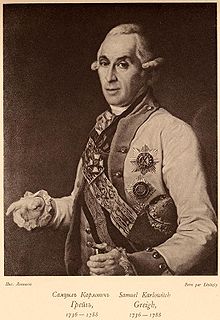 W
WSamuel Greig, or Samuil Karlovich Greig, as he was known in Russia was a Scottish-born Russian admiral who distinguished himself in the Battle of Chesma (1770) and the Battle of Hogland (1788). His son Alexey Greig also made a spectacular career in the Imperial Russian Navy.
 W
WPeter Heywood was a British naval officer who was on board HMS Bounty during the mutiny of 28 April 1789. He was later captured in Tahiti, tried and condemned to death as a mutineer, but subsequently pardoned. He resumed his naval career and eventually retired with the rank of post-captain, after 29 years of honourable service.
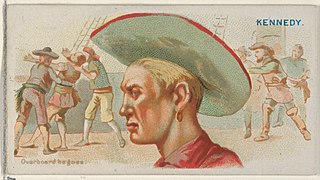 W
WWalter Kennedy was an English pirate who served as a crew member under Howell Davis and Bartholomew Roberts.
 W
WCaptain Francis Light was a British explorer and the founder of the British colony of Penang and its capital city of George Town in 1786. Light and his lifelong partner, Martina Rozells, were the parents of William Light, who founded the city of Adelaide in South Australia.
 W
WRobert Maynard was a British lieutenant, and later captain, in the Royal Navy. Little is known about Maynard's early life, other than he was born in England in 1684 and then later joined the English Navy. He was made a lieutenant in January 1707, and by 1709 was the third lieutenant on HMS Bedford. In November 1718, Maynard was tasked with hunting down and killing the notorious pirate Blackbeard. While leading HMS Pearl, Maynard lured Blackbeard into attacking his ship off the coast of North Carolina, and after confronting the pirate in combat was able to kill him.
 W
WSir John Munden was a rear-admiral in the Royal Navy who was dismissed from the service for having failed to engage a French fleet, despite having been acquitted by a court-martial of any misconduct in the matter.
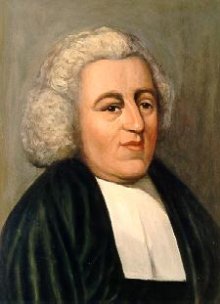 W
WJohn Newton was an English Anglican clergyman and abolitionist, also having been Captain of slave ships and investor of trade. He served as a sailor in the Royal Navy for a period after forced recruitment.
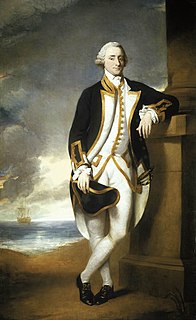 W
WAdmiral Sir Hugh Palliser, 1st Baronet was a Royal Navy officer. As captain of the 60-gun HMS Eagle he engaged and defeated the French 50-gun Duc d'Aquitain off Ushant in May 1757 during the Seven Years' War. He went on to serve as Commodore Governor of Newfoundland, then Controller of the Navy and then First Naval Lord. During the American Revolutionary War he came into a famous dispute with Augustus Keppel over his conduct as third-in-command of the Channel Fleet at the inconclusive Battle of Ushant in July 1778; the dispute led to Palliser being court-martialled, although he was subsequently acquitted. In retirement Palliser became Governor of Greenwich Hospital.
 W
WAdmiral Sir Charles Saunders, KB was a Royal Navy officer. He commanded the fourth-rate HMS Gloucester and led her in action at the Second Battle of Cape Finisterre in October 1747 during the War of the Austrian Succession. After serving as Commander-in-Chief, Mediterranean Fleet, he was appointed Commander-in-Chief, English Channel in charge of the Western Squadron between October 1758 and May 1759). He took command of the fleet tasked with carrying James Wolfe to Quebec in January 1759 and consolidated the dead general's victory after the Battle of the Plains of Abraham in September 1759 by devoting great energy to keeping the British Army, now under the command of Colonel George Townshend, well supplied during the Seven Years' War. He later became Senior Naval Lord and then First Lord of the Admiralty.
 W
WCharles Edward Telfair was an Irish botanist.
 W
WAdmiral of the Fleet George Byng, 1st Viscount Torrington, of Southill Park in Bedfordshire, was a Royal Navy officer and statesman. While still a lieutenant, he delivered a letter from various captains to Prince William of Orange, who had just landed at Torbay, assuring the Prince of the captains' support; the Prince gave Byng a response which ultimately led to the Royal Navy switching allegiance to the Prince and the Glorious Revolution of November 1688.
 W
WCaptain George Vancouver was a British officer of the Royal Navy best known for his 1791–95 expedition, which explored and charted North America's northwestern Pacific Coast regions, including the coasts of what are now the American states of Alaska, Washington, and Oregon, as well as the Canadian province of British Columbia. He also explored the Hawaiian Islands and the southwest coast of Australia.
 W
WJohn White was an Irish surgeon and botanical collector.
 W
WWilliam IV was King of the United Kingdom of Great Britain and Ireland and King of Hanover from 26 June 1830 until his death in 1837. The third son of George III, William succeeded his elder brother George IV, becoming the last king and penultimate monarch of Britain's House of Hanover.
 W
WCharles Finch, 4th Earl of Winchilsea PC was a British peer and Member of Parliament, styled Viscount Maidstone until 1689. He was the son of William Finch, Lord Maidstone and Elizabeth Wyndham.